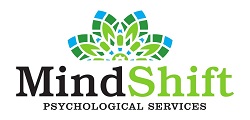It is normal for children to have occasional episodes of trouble focusing and behaving. However, persistent behavioral problems with children, pervasive inattention, and hyperactivity maybe something different.
What is Attention-Deficit Hyperactivity Disorder?
Attention-Deficit Hyperactivity Disorder or ADHD is one of the most common neurodevelopmental disorders. ADHD is often first noticed and diagnosed in childhood and can persist throughout adulthood. Oftentimes, children have episodes of inattention, hyperactivity, and impulsivity that can interfere with their functioning and development.

How Common is ADHD?
ADHD is quite a common occurrence among children. It carries a high rate of comorbid psychiatric problems when these children become adults, such as oppositional defiant disorder, conduct disorder, and mood or anxiety problems.
A Centers for Disease Control and Prevention study shows that ADHD affects an estimated 4 to 12% of children worldwide and 4 to 5% among teens. In the latest estimates in the US, roughly 6 million children have been diagnosed with attention-deficit hyperactivity disorder. The increase in prevalence is attributed to more parents seeking treatment for their children with suspected ADHD.
Researchers have also found out that 1 in 20 children in the US are taking medication. Half of the children with ADHD received behavioral treatment, especially the younger ones. Nearly two-thirds (64%) had another mental, emotional, or behavioral disorder.
How Can You Tell If A Child Might Have ADHD?
It is typical for children to have impulsive behaviors and excessive energy. Children with ADHD do not outgrow these childish behaviors. They often have trouble paying attention, controlling behaviors, and being overly active. There are 3 main aspects of attention-deficit behavior, namely: inattention, hyperactivity, and impulsivity.
Inattention is a child’s inability to keep focused on one task or being easily distracted. Children may show signs of difficulty sustaining focus and inability to be organized with tasks. Hyperactivity refers to a child’s inability to behave and stay put in one place, excessive fidgeting, or extreme restlessness and talking. Lastly, impulsivity is when a child makes hasty actions without thinking about the possible consequences of an action. Impulsive children act on and decide quickly without giving consideration to action.
Here are some more specific signs and symptoms to watch out for in children suspected of attention-deficit hyperactivity disorder:
Inattention
Children with symptoms of inattention may often:
- Make careless and hasty mistakes in schoolwork and other activities
- Have difficulty sustaining attention in performing tasks in school, at play, and even casual conversations
- Seem not to listen when addressed or spoken to directly
- Have trouble following a set of instructions
- Quickly lose focus on things to be done and easily get sidetracked
Hyperactivity
Hyperactive children may display actions such as:
- Frequently fidgeting, squirming, or moving around themselves
- Leave their seats regularly
- Being constantly in motion – be it running, walking, or climbing
- Having trouble waiting for his or her turn
- Talking non-stop with no room for being interrupted
Impulsivity
In children, impulsivity can be manifested by:
- Climbing and jumping around unstable structures with the risk of falling
- Answering before questions are completed or interrupting conversations
- Having trouble following rules
- Grabbing or throwing things randomly
- Being aggressive towards other kids (hitting, biting, kicking)
Can Attention-Deficit Hyperactivity Disorder Be Cured?
When a child is diagnosed with attention-deficit hyperactivity disorder, parents are concerned about which treatment is best for their child. With the right treatment, ADHD can be managed. What works best is a case to case basis, depending on the child and family.
There is currently no cure for ADHD, but several strategies are employed to reduce symptoms and improve a child or adult’s functioning. Treatments available include medications, psychotherapy, or a combination of both.
According to an article published in The Lancet, 3 in 4 children with ADHD receive treatment. 30% received pharmacologic treatment alone, 15% received behavioral and psychotherapy alone, and 30% received a combination of both.
The most common medications used in ADHD reduce hyperactivity and impulsivity, and improve a child’s ability to focus better. The most widely used are a group of drugs called stimulants. These medications work by increasing brain chemicals and hormones that play important roles in attention.

When to Start Psychotherapy?
It is often completely normal to see children restless and inattentive, and this does not necessarily mean they have ADHD. Going through these rowdy phases is normal.
However, if you think your child’s behavior is different from other children of their age, seeking professional help is a prudent action to take. It is best to seek professional help and assess the possible treatment options for your child.
Here at Mindshift Psychological Services, we provide an array of expertise to help you with your dilemmas. Children may undergo behavioral therapy, a type of psychotherapy that aims to help the child improve his or her behavior. Family therapy can also help families find ways to handle the child’s excessive behaviors and encourage positive behavioral changes.
Whatever treatment you decide on, you may quickly reach us through our website, or head on to the nearest Mindshift Psychological Services branch, located near me in California near Los Angeles, Newport Beach, and Corona. See also branches located in Southern California – Century City, Costa Mesa, and Brentwood. Take full control of your life and get help now to improve your child’s ADHD.



